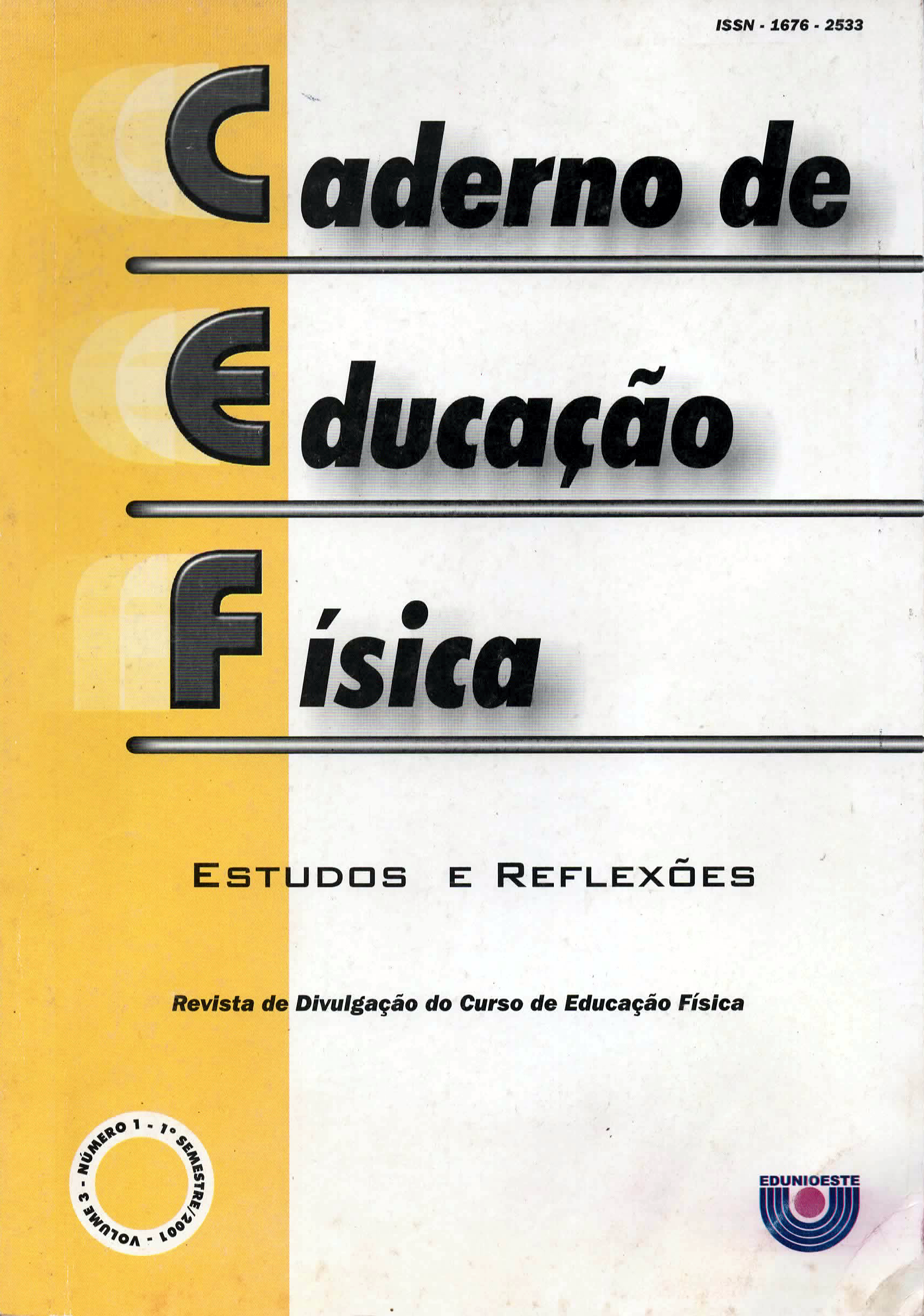Treinamento pliométrico para goleiros de futebol
DOI:
https://doi.org/10.36453/cefe.2001.v3.i1.p11Palabras clave:
Pliometria, Goleiro de Futebol, Treinamento.Resumen
Este estudo teve por objetivo analisar a influência da pliometria, através do método de "choque", no treinamento da força explosiva (potência muscular) dos membros inferiores do goleiro de futebol. Foram sujeitos desse estudo 4 goleiros de futebol, 2 profissionais e 2 juniores da empresa Marechal Esporte Clube Ltda, com idade entre 19 e 24 anos. No pré-teste os atletas realizaram o teste do salto vertical (Vertical Jump) e foram pesados, chegando-se à potência muscular através do monograma de Lewis, que adequa o resultado do salto vertical ao peso. O programa de treinamento pliométrico, no método de "choque", compreendeu 3 sessões por semana, durante um período de 4 semanas, sendo que na 1ª semana as alturas do salto foram assim distribuídas: 1º treino 45 cm; 2º treino 55 cm e 3º treino 65 cm. Nas 3 semanas seguintes a altura do salto foi de 75 cm. Após as 4 semanas de treinamento foi realizado o pós-teste e aplicado um questionário fechado com 4 perguntas. Os dados foram analisados estatisticamente através da aplicação da média (X), desvio padrão (DP), teste "t" de Student para amostras dependentes e avaliação do questionário. Os resultados obtidos com relação à potência muscular apontaram, no pré-teste, X=124,75±7,09 Kg.m/s. Para o pós-teste encontrou-se X=134,75±7,80 Kg.m/s. O aumento médio na potência muscular foi de 10 Kg.m/s ou 8,01%. O teste "t" de Student para amostras dependentes apresentou um índice de p<0,001. Na avaliação do questionário constatou-se que os atletas não tiveram problemas ao trabalhar na altura de 75 cm, após o término do período de treinamento 75% dos atletas responderam sentirem melhoria considerável e 25% responderam sentirem grande melhoria no desempenho. Os atletas nunca haviam praticado treinamento pliométrico no método de "choque". Pode-se concluir que o treinamento pliométrico através do método de "choque", no período de 4 semanas, se mostrou eficiente na melhoria da força explosiva (potência muscular) dos membros inferiores. A altura de 75 cm é aceitável para o treinamento no método de "choque" e, finalmente, os sujeitos perceberam, na prática, a melhoria no desempenho.
Descargas
Citas
BANCO de Dados. Disponível na Internet: http://www.goleiros.com.br. Acesso em: 04 out. 2000.
BARBANTI, V. J. Treinamento físico: bases científicas. São Paulo: CLR Balieiro, 1986.
COLOMBELI, V. M. A pliometria aplicada ao treinamento de goleiro de futebol. Marechal Cândido Rondon-PR. 2000. Monografia (Graduação em Educação Física) - Universidade Estadual do Oeste do Paraná, Marechal Cândido Rondon, 2000.
DANTAS, E. H. M. A prática da preparação física. Rio de Janeiro: Shape, 1998.
DOMINGUES, A. Goleiro: 100 segredos. Curitiba: CR&C Comunicações, 1997.
FOX, E. L. Bases fisiológicas da educação física e dos desportos. 4. ed. Rio de Janeiro: Guanabara Koogan, 1991.
MARINS, J. C. B. Avaliação e prescrição de atividade física: guia prático. Rio de Janeiro: Shape, 1998.
MATVÉIEV, L. P. Fundamentos do treino desportivo. Lisboa: Livros Horizonte, 1986.
NOGUEIRA, A. As mãos da glória. Folha do Paraná, Londrina, Caderno de Esportes, p. 3, 02 ago. 2000.
SANTOS, E. V. A importância da pliometria no desenvolvimento da impulsão vertical em atletas de voleibol. Marechal Cândido Rondon, 1997. Monografia (Especialização em Educação Física) – Universidade Estadual do Oeste do Paraná, Marechal Cândido Rondon, 1997.
TUBINO, M. J. G. Metodologia científica do treino desportivo. 11. ed. São Paulo: IBRASA, 1984.
VIANA, A. R. Treinamento do goleiro de futebol. Viçosa: UFV, 1995.
WEINECK, J. Biologia do esporte. São Paulo: Malone, 1986.
ZAKHAROV, A. Ciência do treinamento esportivo. Rio de Janeiro: Grupo Palestra Sport, 1992.
Descargas
Publicado
Cómo citar
Número
Sección
Licencia
Derechos de autor 2000 Derechos de Autor Compartidos

Esta obra está bajo una licencia internacional Creative Commons Atribución-NoComercial-CompartirIgual 4.0.
Los derechos de autor permiten descargar, compartir, copiar, distribuir, adaptar, transformar, exhibir y reproducir total o parcialmente el artículo para cualquier propósito legal, siempre que no tenga fines lucrativos y se cite la fuente.
Informamos que todo el contenido del texto publicado, así como sus posibles errores ortográficos y gramaticales, es de total responsabilidad de sus autores, sin que el Caderno de Educação Física e Esporte o nuestros Evaluadores Ad Hoc asuman ninguna implicación legal ni responsabilidad por posibles negligencias en el uso del idioma portugués o extranjero.



















